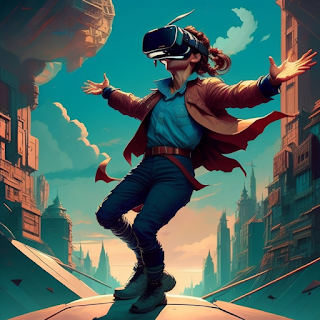Virtual Reality (VR) has become increasingly popular in recent years, but do you know how it really works? In this article, we will dive into the science behind VR and what makes it possible for users to experience a whole new world through VR technology.
What is Virtual Reality?
Virtual Reality is a computer-generated 3D environment that can be interacted with by the user. It is designed to simulate real-life experiences and provide a sense of presence. VR systems typically consist of a headset and hand-held controllers that provide a user-friendly interface. The user is then immersed into an entirely virtual world that can be explored and interacted with.
How VR Works: The Technology Behind It
To create a convincing virtual experience, VR uses a combination of technologies to trick the user's brain into believing that they are in a different reality.
Head-mounted displays (HMDs)
One of the most crucial elements of VR is the head-mounted display. An HMD is a headset that tracks the user's head movement and translates it into the virtual environment. This allows the user to look around and interact with the virtual space as if it were the real world.
Motion trackers
Motion trackers are another important aspect of VR technology. They track the user's movements and translate them into the virtual world. This means that if you want to walk forward in the virtual environment, you need to physically take steps forward in the real world.
Audio
Audio is also an essential element of VR technology. To create a truly immersive experience, virtual environments need to have 3D positional audio. This means that if you hear a sound coming from a specific location in the virtual world, it will sound like it's coming from that direction in the real world.
Types of VR
There are two primary types of VR: 3 Degrees of Freedom (3DoF) and 6 Degrees of Freedom (6DoF).
3 Degrees of Freedom (3DoF)
3DoF VR systems track the user's head movements in three directions: left and right, up and down, and forward and backward. This type of VR is more limited in terms of interaction and movement but is still a great way to experience different virtual environments.
6 Degrees of Freedom (6DoF)
6DoF VR systems track the user's head movements in six directions: all three directions are tracked by 3DoF systems plus rotation in all directions. This type of VR allows for more precise and immersive interactions.
Benefits of Virtual Reality
Virtual Reality not only provides a fun and entertaining experience but also has practical benefits.
Training and Education
VR has proven to be an effective tool in training and education. It allows users to experience scenarios that may be difficult or impossible to recreate in real life. For example, surgeons can practice complex surgeries in a virtual environment without the risks associated with real-life surgery.
Gaming
One of the primary uses of VR is for gaming. VR provides an immersive gaming experience that traditional gaming cannot match. It allows players to experience games in a whole new way, making it a popular choice for gamers worldwide.
Therapeutic uses
Virtual Reality has also been used for therapeutic purposes. It is effective in treating anxiety disorders, PTSD, and other mental health conditions. VR therapy allows patients to face their fears in a safe and controlled environment, making it a valuable tool in mental health treatment.
Conclusion
Virtual Reality technology is becoming more advanced every day, and its possibilities are endless. We hope this article has provided some insight into the science behind VR and its practical applications. Whether it's for gaming, training, or therapy, VR provides an experience that cannot be matched by any other technology.

0 Comments